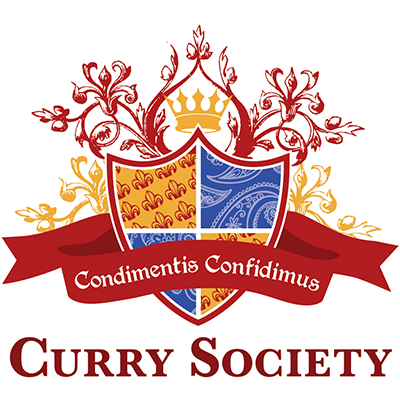A Brief History of Bristol: The Cultural Tapestry Shaped by Migrant Communities
The Cultural Tapestry Shaped by Migrant Communities and the Subcontinent’s Influence on Food
Bristol, a vibrant city in the southwest of England, has long been a hub of trade, innovation, and cultural exchange. With its roots stretching back to Roman times, the city has undergone many transformations, yet one constant has been its welcoming embrace of diverse cultures and people. From its early beginnings as a key port in medieval England to its current status as a bustling, multicultural metropolis, Bristol’s history is deeply intertwined with the stories of its migrant communities, particularly those from the Indian subcontinent, whose influence has helped shape the city’s identity and its thriving food culture.
Medieval Origins and Maritime Power
Bristol’s rise as an important city began in the Middle Ages, with the development of its port. By the 12th century, it was already a key trading hub, with connections across Europe and beyond. During the Age of Discovery, the city’s maritime influence grew significantly, paving the way for its relationship with global trade and its eventual ties to the Indian subcontinent through colonial routes.
While this period brought immense wealth, it was not without controversy, particularly during the transatlantic slave trade. This legacy is an important part of Bristol’s history, shaping its global connections and influencing migration patterns in the centuries to follow.
Post-War Migration and the Arrival from the Subcontinent
The mid-20th century marked a turning point for Bristol as a new wave of migration reshaped the city. With Britain rebuilding after World War II, workers were invited from across the Commonwealth to support industries and public services. Migrants from India, Pakistan, and Bangladesh settled in Bristol, particularly in areas such as Easton, St. Paul’s, and Lawrence Hill. These communities brought with them a deep cultural heritage, strong entrepreneurial spirit, and culinary traditions that would come to define a new chapter in Bristol’s story.
The arrival of South Asian migrants not only addressed labor shortages in key industries such as textiles, transport, and healthcare but also enriched Bristol’s social and cultural fabric. Family-owned businesses, from corner shops to clothing stores and local eateries, began to thrive, establishing a foundation for the city’s evolving identity.
A Culinary Revolution: The Influence of the Indian Subcontinent
Today, the influence of South Asian communities is most profoundly seen in Bristol’s food scene, where flavors and dishes from the subcontinent have become central to the city’s culinary identity. What began with humble curry houses in the 1960s and 70s has evolved into a sophisticated, diverse, and innovative food culture that reflects the depth and variety of Indian, Pakistani, and Bangladeshi cuisines.
Bristol boasts an impressive array of South Asian restaurants, ranging from family-owned establishments serving traditional recipes to modern eateries experimenting with fusion flavors. The city has embraced everything from classic dishes like butter chicken, biryani, and samosas to regional street food offerings such as chaat, pani puri, dosas, and kebabs. This culinary heritage is a direct result of the city’s thriving South Asian communities, who have brought both authenticity and innovation to the table.
Street food has been particularly transformative. The rising popularity of Indian street food staples, like chaat and vada pav, reflects Bristol’s appetite for bold, vibrant flavors. Pop-ups, food trucks, and market stalls now offer authentic bites that transport diners to the bustling streets of Mumbai, Lahore, or Dhaka. Establishments like Talwar Express are at the forefront of this culinary wave, combining tradition with modern dining experiences that appeal to a wide, curious audience.
Community, Culture, and Heritage
Beyond food, the South Asian community in Bristol has enriched the city’s cultural life in countless ways. Festivals like Diwali and Eid are celebrated widely, with events that bring together people of all backgrounds. Cultural organizations and community centers continue to provide spaces for storytelling, arts, and shared experiences, highlighting the importance of heritage and tradition in a modern, multicultural Bristol.
The South Asian entrepreneurial spirit has also played a major role in Bristol’s economy and community life. From family-run grocery stores stocked with spices, lentils, and fresh produce to contemporary businesses offering new takes on Indian-inspired menus, these enterprises have cemented their place in the city’s fabric.
Bristol’s love for South Asian food is also a symbol of its open-mindedness and evolving identity. Dishes once considered “exotic” are now part of everyday life for Bristolians, whether it’s indulging in a quick samosa snack or enjoying a Friday night curry with friends. This acceptance is a testament to how migrant communities have shaped not only the food scene but also the very character of the city itself.
The Future of Food in Bristol: A Celebration of Diversity
As Bristol looks to the future, the influence of South Asian communities remains as strong as ever. Restaurants, food stalls, and chefs from the subcontinent continue to lead the way, introducing new generations to flavors, stories, and traditions passed down through families. Whether it’s a fine dining experience or street food served hot off a grill, South Asian cuisine has become a cornerstone of Bristol’s identity.
Bristol’s food culture stands as a celebration of diversity, community, and connection. The influence of migrants from the Indian subcontinent has not only transformed the city’s dining scene but has also created a shared language of food, where every bite tells a story of heritage, resilience, and creativity. In a city where cultures coexist and thrive, the legacy of Bristol’s South Asian communities is woven into the very essence of what makes it one of the UK’s most exciting and forward-thinking cities.

